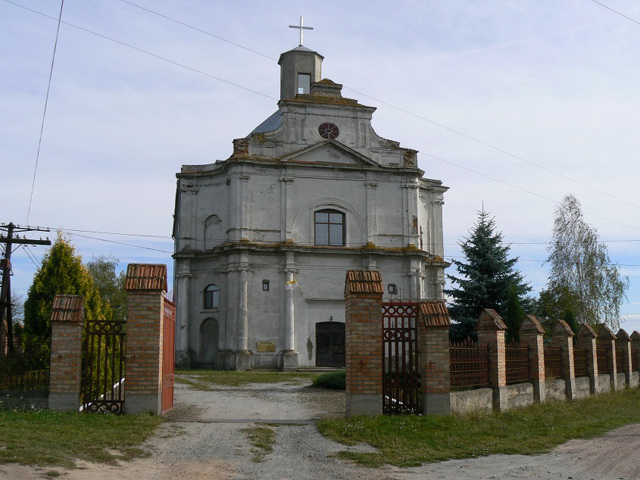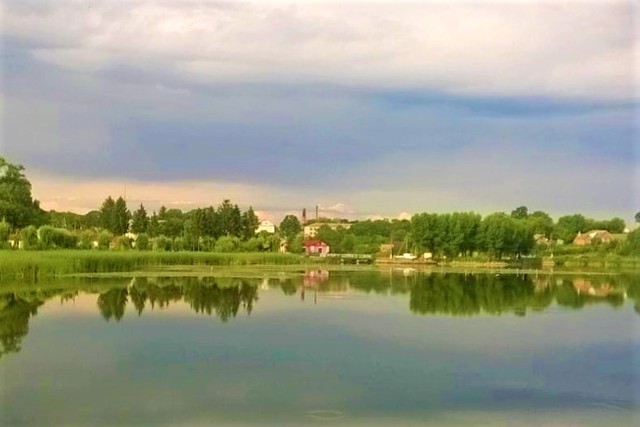Functional temporarily unavailable
General information about Liubar
The ancient town Liubar on the Zhytomyr-Khmelnytskyi highway arose in the middle of the 14th century on the hillfort of the chronicled Bolokhiv, which was the center of the Bolokhiv land, submitted to the Golden Horde during the Mongol-Tatar invasion, but was later destroyed by the Galician-Volyn princes.
The Lubart fortress on the banks of the Sluch River was built in 1350 by the Lithuanian prince Lubart, in whose honor the city received a new name. For some time, Liubar was the center of a separate principality within Lithuania. Since 1589, the city was owned by the princes Ostrozky. In 1634, at the expense of Prince Stanislav Lubomyrsky, the Dominican monastery was founded, from which the Church of Saint Michael (1752) was preserved.
In 1666 (according to other sources - ...
The ancient town Liubar on the Zhytomyr-Khmelnytskyi highway arose in the middle of the 14th century on the hillfort of the chronicled Bolokhiv, which was the center of the Bolokhiv land, submitted to the Golden Horde during the Mongol-Tatar invasion, but was later destroyed by the Galician-Volyn princes.
The Lubart fortress on the banks of the Sluch River was built in 1350 by the Lithuanian prince Lubart, in whose honor the city received a new name. For some time, Liubar was the center of a separate principality within Lithuania. Since 1589, the city was owned by the princes Ostrozky. In 1634, at the expense of Prince Stanislav Lubomyrsky, the Dominican monastery was founded, from which the Church of Saint Michael (1752) was preserved.
In 1666 (according to other sources - in 1604), the Saint George's Monastery was founded, which in 1740 became the Basilian Monastery, where the Basilian School operated. The Baroque-style building, built in 1775, has survived to this day.
Near the school you can see the two-story palace of the Poninskys and the gate - a one-story building that used to be the gate of the manor.
The old mill on the Sluch rapids has also been preserved.
Стародавнє селище Любар на трасі Житомир-Хмельницький виникло в середині XIV сторіччя на городищі літописного Болохова, який був центром Болохівської землі, підкорився Золотій Орді під час монголо-татарської навали, але пізніше був знищений галицько-волинськими князями.
Фортецю Любартів на березі річки Случ звів в 1350 році литовський князь Любарт, на честь якого місто отримало нову назву. Деякий час Любар був центром удільного князівства у складі Литви. З 1589 року містом володіли князі Острозькі. В 1634 році коштом князя Станіслава Любомирського був заснований Домініканський монастир, від якого зберігся костел Святого Михайла (1752 рік).
В 1666 році (за іншими даними - в 1604 році) було засновано Георгіївський монастир, що в 1740 році став василіанським, при якому діяла Ва ...
Стародавнє селище Любар на трасі Житомир-Хмельницький виникло в середині XIV сторіччя на городищі літописного Болохова, який був центром Болохівської землі, підкорився Золотій Орді під час монголо-татарської навали, але пізніше був знищений галицько-волинськими князями.
Фортецю Любартів на березі річки Случ звів в 1350 році литовський князь Любарт, на честь якого місто отримало нову назву. Деякий час Любар був центром удільного князівства у складі Литви. З 1589 року містом володіли князі Острозькі. В 1634 році коштом князя Станіслава Любомирського був заснований Домініканський монастир, від якого зберігся костел Святого Михайла (1752 рік).
В 1666 році (за іншими даними - в 1604 році) було засновано Георгіївський монастир, що в 1740 році став василіанським, при якому діяла Василіанська школа. Будівля в стилі бароко 1775 року побудови збереглася до наших днів.
Поруч зі школою можна побачити двоповерховий палац Понінських і браму - одноповерхову будівлю, що раніше служила воротами садиби.
Також зберігся старий млин на порогах Случа.
Сплануй своє перебування у Liubar
What to see and where to go in Liubar
Tourist attractions and museums of Liubar

Saint Archangel Michael and Saint Dominic Church
Temple , Architecture
The Dominican monastery was founded in Liubar in 1634. At the same time, Prince Stanislav Lubomyrsky built the first Dominican church.
In the middle of the 17th century, the temple was destroyed by the Cossacks during the War of Liberation. In 1752, it was rebuilt again by Frantsishek Ferdynand Lubomyrsky, it was consecrated in the name of Saints Michael and Yan Nepomuk.
In 1864, the Dominican monastery was closed, the church became a parish church. During the Soviet rule, the temple was also closed.
Today it is an active church of Saint Michael the Archangel and Saint Dominic. Restoration is underway.

Saint George's Monastery
Architecture
The well-preserved school building of the Saint George Basilian Monastery in Liubar was built in 1775.
It was part of the complex of Saint George's Monastery, which was founded in 1666 as a Jesuit Greek-Catholic monastery (according to other data, in 1604 as an Orthodox monastery). Since 1752, a school has been operating at the monastery, with 450 children studying in six classes. After the Jesuit order was dissolved, the monastery and school became Basilian.
The school building is in the baroque style, brick, two-story, with a figured pediment. The walls of the building are reinforced with buttresses.
The premises of the school are still used for their intended purpose - the Liubar Vocational Lyceum is located here.
Reviews Liubar
Geographical information about Liubar
| {{itemKey}} | {{itemValue}} |
|---|---|
| Region |
Zhytomyr |




